The intrigue surrounding the success of bestsellers on Etsy is universal. The question of why certain Etsy stores thrive while others falter fascinates many. This curiosity often leads to a form of espionage.
By understanding the strategies used by these successful sellers and the mechanics behind their superior performance, we can unlock the secrets to their success. Interestingly, some of these top sellers may not even fully comprehend why their methods work so effectively!

If the term "espionage" seems disquieting or unethical to some, consider it analogous to standard market research and advertising activities that nearly every business conducts. We aren't attempting to steal trade secrets or infringe upon trademarks, patents, or copyrighted information or products. I strongly discourage such behavior!
Consider this scenario: you're establishing a handmade leather goods store. Wouldn't you take a few moments to visit other similar stores to inspect their products and presentation? I think you would! This doesn't imply you'll duplicate their products or sell identical leather wallets. Rather, you're merely observing their methods and determining how you can differentiate your product. This unique differentiation forms your unique selling point and defines your brand.
So, rest assured, I'm using the term "spy" in a rather relaxed sense here!
All we're really doing is researching what's sold on Etsy and similar platforms. Although gathering this data might be challenging, tools like EtsyHunt and Esale simplify the process by providing access to all kinds of data.
Furthermore, I'll reveal some intriguing methods to collect publicly available competitor information and effectively utilize this data in your marketing strategy. Conducting thorough market research and marketing due diligence is crucial before launching any product or business. Whether you're seeking inspiration for product line expansion or trying to comprehend why certain sellers are successful, you'll quickly learn some fascinating insights!
Do all the top sellers on Etsy sell identical products?
By using Etsy spy tools, we can delve into Etsy's best-selling items. The data reveals that the top ten stores generally sell similar products like crafts, jewelry, and party supplies.
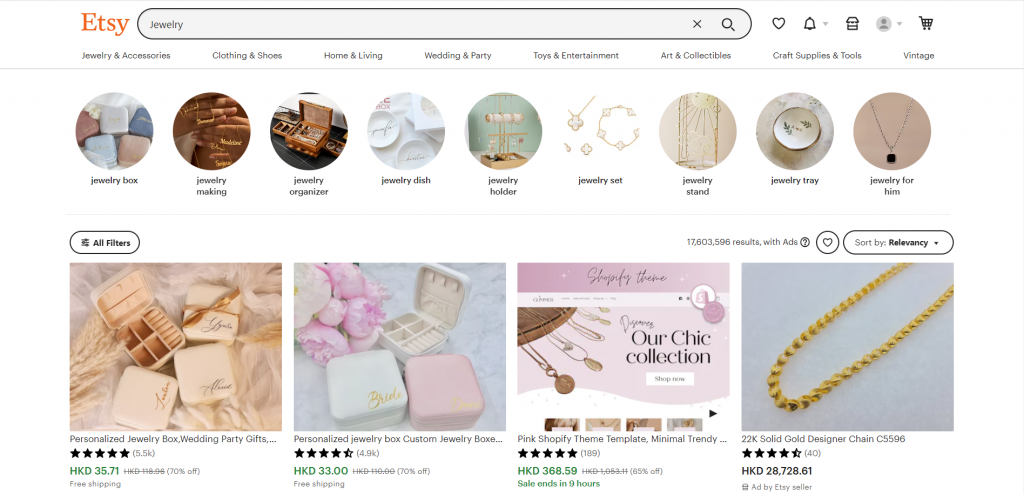
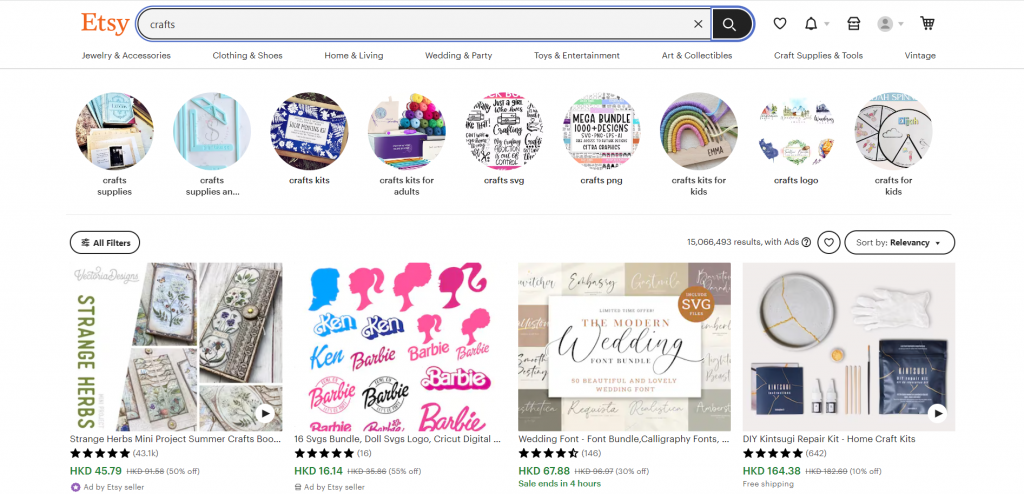
Let's explore some common questions:
- What are the primary categories of these best-selling products? They are mainly crafts, jewelry, and party supplies.
- Do these sellers have their own websites? Most of them do not have independent websites.
- Which social media platforms are they active on? They primarily use platforms like Facebook and Pinterest.
- How many products do they list in their store? They typically list more than 10,000 different items.
- Are these products unique? What sets them apart? While it requires further verification, most of these products seem similar to those offered by other wholesale suppliers.
- How many people search for these items each month? According to my keyword research tool, over 50,000 people search for craft-related keywords each month.
Spying tools can uncover some interesting conclusions:
1. Product quantity matters.
These sellers often procure products wholesale with a profit-making intent, enabling them to maintain large product inventories. Although reselling non-handmade items is a sensitive and controversial topic among Etsy sellers, we won't delve into it here. However, we can infer that if you're crafting unique items, you're unlikely to list thousands of items in your store. Sellers with large product inventories tend to gain more visibility on online platforms.
2. There is significant market demand for these items.
Over 50,000 monthly searches for craft-related items indicate a high interest in these products. Comparing this to the monthly searches for "children's books" reveals a noticeable difference in demand and sales gap.
What can we learn from Etsy Bestsellers?
1. High sales volume doesn't necessarily equate to massive profits.
Most sellers' sales range from $1-$5 per product. This means a seller moving 10 high-priced items per day could make the same amount as a seller with a large volume of low-priced sales.
2. Avoid imitation.
Many Etsy shops are virtually identical. A review of these stores reveals many sellers offering the same products. None of these stores stand out, nor do they entice me to become a fan or express interest in their products. Especially when I can likely find the same products elsewhere for less, the apparent price gouging is a turn-off. A fundamental law of supply and demand is that an oversupply devalues a product.
3. Products must be in demand.
You may be selling unique items that you've created, but if no one knows about them or needs them, they won't sell. Have you researched product demand? Free Etsy spy tools like keyword analysis can reveal the monthly search volume for a particular phrase or industry. Unless your specific craft or product exceeds 20,000 month.
What is the Etsy Spy Tool
The working principle of Etsy Spy Tools is to scrape data from Etsy and analyze it. They can provide sellers with information about the best-selling products, popular tags, and successful stores. They can also show sellers which listings perform well and which ones do not.
Etsy Spy Tools can also help sellers track competitors. They can show sellers which stores are selling similar items and how they are pricing them. They can also show sellers which keywords and tags competitors are using, so that they can optimize their own listings accordingly.
Overall, Etsy Spy Tools are essential for anyone hoping to achieve success on Etsy. They provide valuable insights and data that can help sellers optimize listings, increase sales, and stay ahead of the competition.
Most Recommended Etsy Spy Tools
If you are an Etsy seller, you will know how important it is to keep an eye on your competitors. Luckily, there are several Etsy spy tools available to help you do this. Here are three of the most highly-rated Etsy spy tools to help you stay ahead.
Erank
Erank is one of the most widely-used Etsy spy tools. This tool can help you find the best-selling tags your competitors are using. Armed with this information, you can optimize your listings and stay ahead in the competition. The tool also provides information on how to track Etsy competitors and find the best-selling items on Etsy.
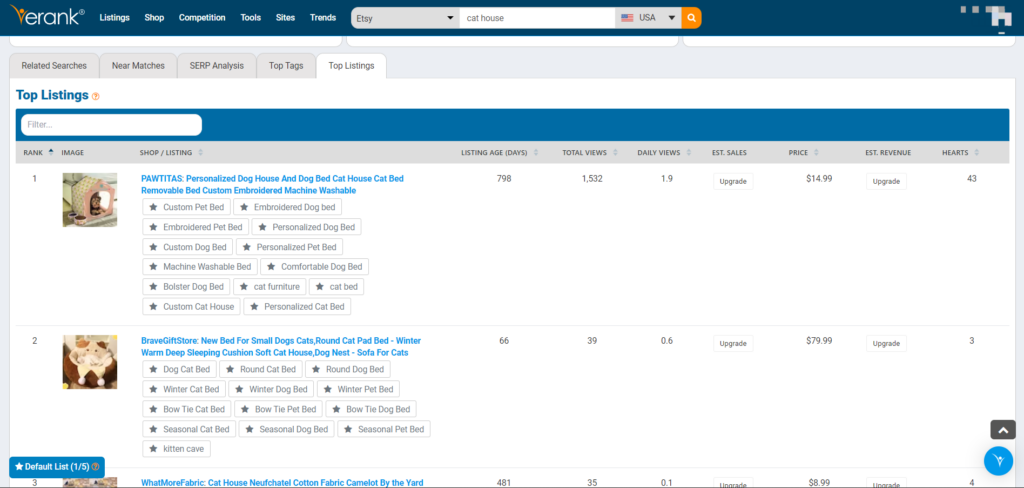
Etsyhunt
A great Etsy spy tool is EtsyHunt. This tool provides reliable data from Etsy and displays best-selling items, new favorites in the past 30 days, competition level, and views in the past seven days for each niche market. With this information, you can adjust your strategy and keep ahead of competitors.
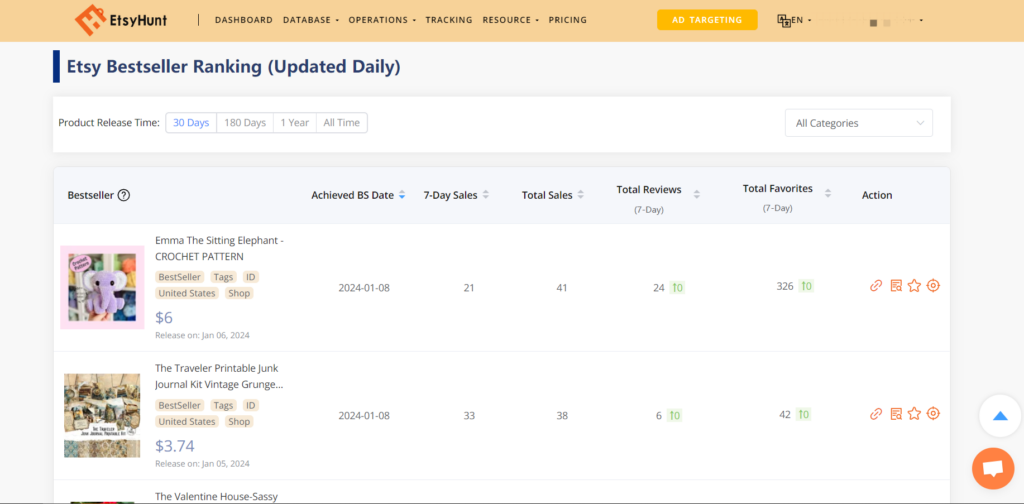
Esale
Esale is a completely free Etsy spy tool. The tool provides a wealth of features, a notable one being its ability to analyze trending categories. You can make decisions on whether to sell particular category items by viewing market trends of the desired selling category, and it provides item optimization, shop analysis, keyword analysis and various features to assist sellers with one-stop operation services from selection to sales.
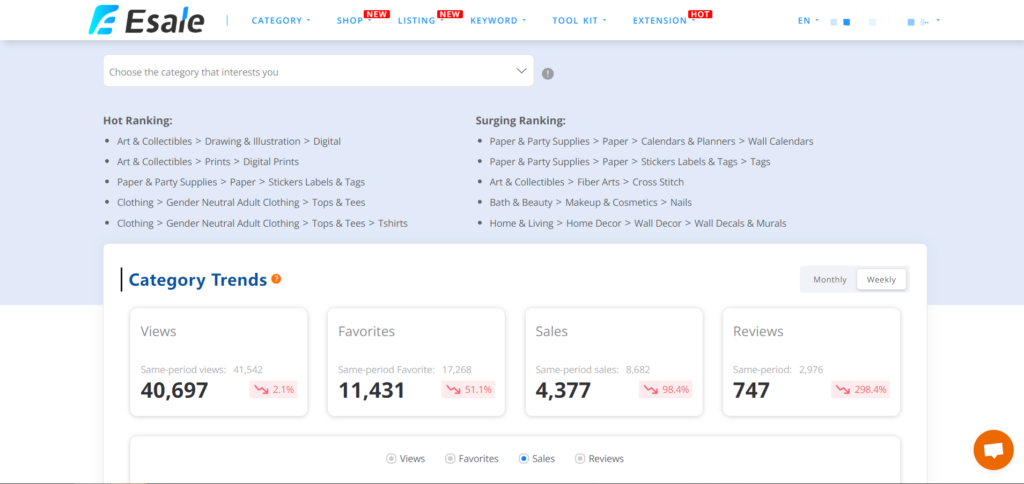
Benefits of Etsy Spy Tools and Use Cases
Etsy Spy Tools offer countless benefits to sellers. In this section, we will discuss some of the most significant benefits of using Etsy Spy Tools.
Understand Competitors
Etsy Spy Tools can give sellers a competitive edge over their competitors. By analyzing competitors' sales and marketing strategies, sellers can identify areas they can improve on. For example, they can identify the most popular products in their niche market and adjust their product offer accordingly. They can also analyze competitors' pricing strategies and adjust their own pricing to be more competitive.
Case study: Take the example of using the Marmalead tool to research keywords for their products. When certain keywords are found to be more popular than others, these keywords can be used to optimize their own listings. This will lead to more clicks and more sales.
Find Niche Products
Etsy Spy Tools can also help sellers increase their sales. By identifying the most popular products in their niche market, sellers can create similar products that are likely to sell well. They can also identify the most effective marketing strategies used by competitors and implement those that work in their own marketing campaigns. By doing so, they can attract more customers and increase sales.
Case Study: Use the Alura tool to monitor competitors' sales data, find the best-selling listings in the niche market. For example, by finding that competitors are selling a lot of personalized items and their sales are continuously growing in a short period, you can add personalized items to your own store. This can help sellers quickly find niche products to start selling.
Optimize Product Strategy
Etsy Spy Tools can also help sellers choose the best products to sell in their stores. By analyzing competitors' sales data, sellers can identify the products that are most likely to sell well. They can also identify gaps in the market and create products to fill these gaps. This can help sellers avoid wasting time and money on products that don't sell well.
Case Study: For instance, use the Esale tool to analyze competitors' titles, descriptions, and tags. If you find that competitors are using tags irrelevant to their products, which makes them rank higher in search results. Sellers can follow suit, optimizing their tags to drive traffic and revenue.
Common Misconceptions about Etsy Spy Tools
Etsy Spy Tools are very useful for Etsy sellers who want to stay ahead in the competition. However, there are some common misconceptions about these tools that may hinder sellers from using them effectively. In this section, we will address and debunk some of these misconceptions.
Misconception 1- Only Good for Monitoring Competitors
A common misconception about Etsy Spy Tools is that they are only useful for monitoring competitors. While these tools can indeed help sellers keep an eye on competitors, they can also be used to find new product ideas, identify popular trends, and optimize listings.
Misconception 2- Expensive and Difficult to Use
Another common misconception is that Etsy Spy Tools are expensive and difficult to use. In reality, there are many affordable and user-friendly options available. Some tools even offer free trial versions or entirely free basic versions. For example, Esale is a completely free Etsy spy tool.
Misconception 3- Using Spy Tools is Unethical
The third misconception is that using Etsy Spy Tools is unethical or an act of "cheating". However, the use of these tools is entirely in line with Etsy's terms of service and is a common practice among successful Etsy sellers. Furthermore, using these tools can help sellers make informed decisions and improve their business practices.
In conclusion, successful Etsy sellers use spy tools to gain a deep understanding of competitors' strategies and optimize their own listings. By using these tools, they can stay ahead in the competition and increase their sales.





